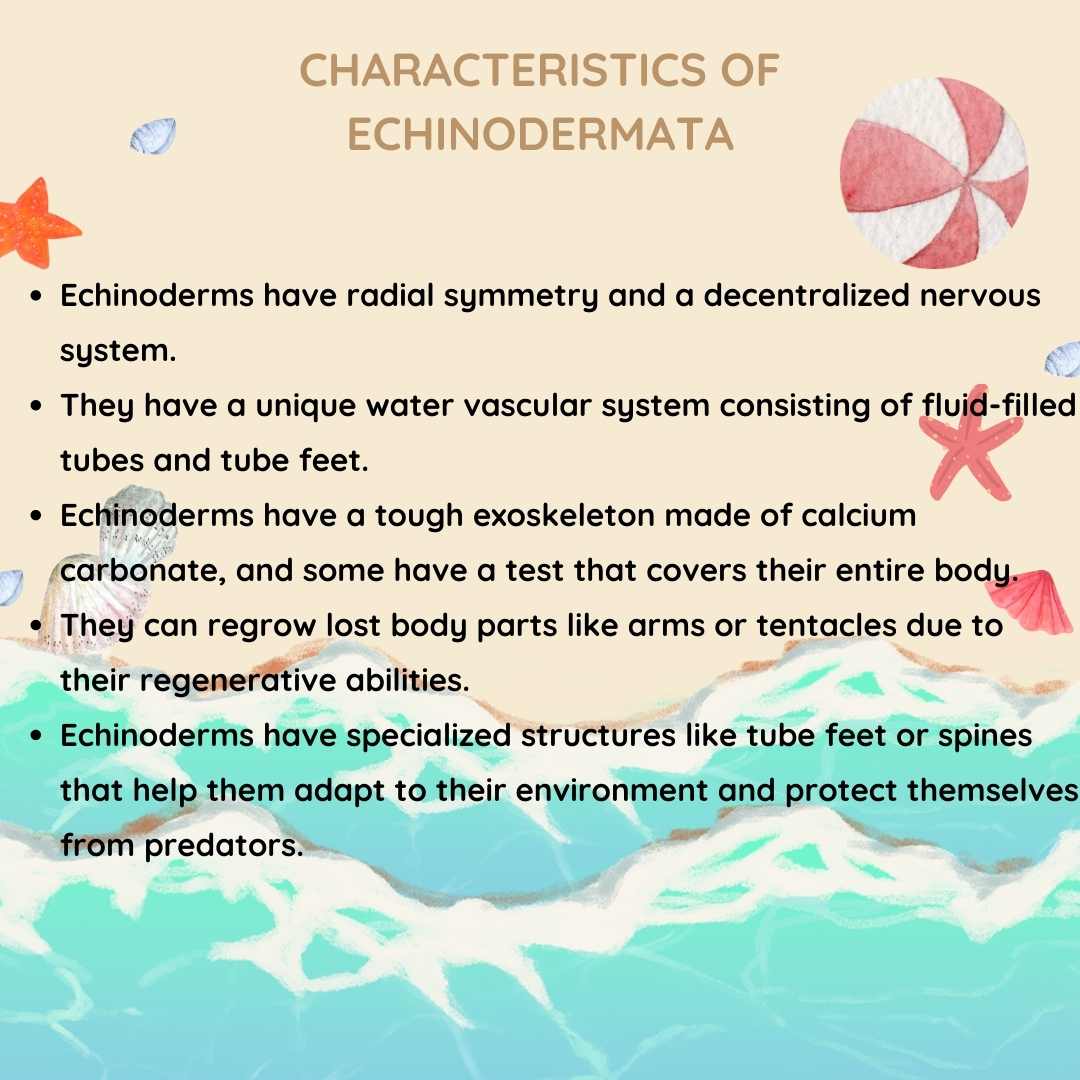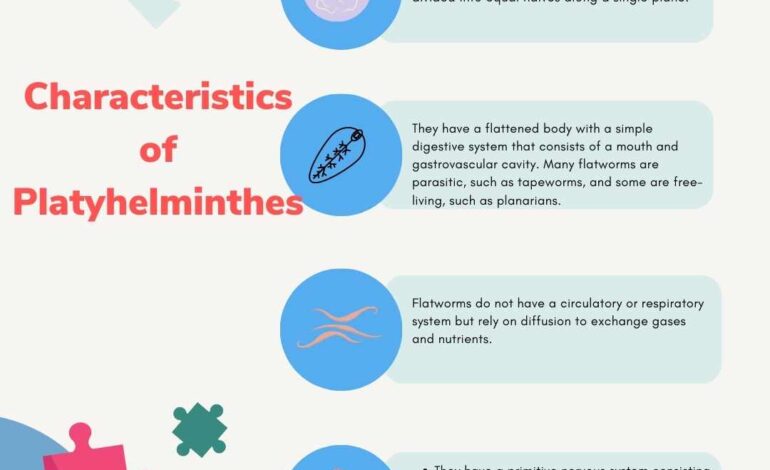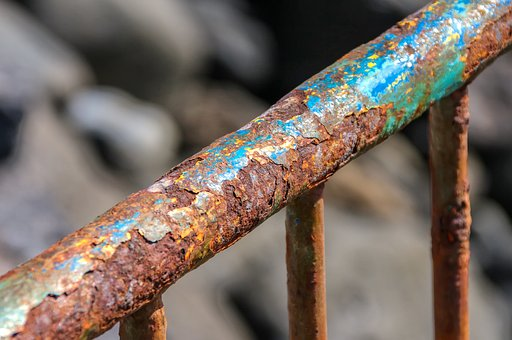Phylum Echinodermata
Phylum Echinodermata are:
- Radial symmetry as adults, bilateral symmetry as larvae
- Hard endoskeleton composed of calcium carbonate plates
- Water vascular system for 🡪 locomotion, respiration, and feeding
- Tube feet for movement and feeding
- Regeneration ability
Examples of Echinodermata
Phylum Echinodermata is a group of marine animals that includes starfish, sea urchins, sand dollars, sea cucumbers, and crinoids.
Sub Phylum of Echinodermata
The phylum Echinodermata is divided into five sub-phyla.
Crinozoa
Includes sea lilies and feather stars, which are filter-feeding echinoderms that live attached to the substrate by a stalk or stalk-like structure.
Asterozoa
Includes sea stars, or starfish, which are predatory echinoderms with five or more arms radiating from a central disk.
Ophiurozoa
Includes brittle stars and basket stars, which are mobile echinoderms with long, slender arms that are used for locomotion and feeding.
Echinozoa
Includes sea urchins and sand dollars, which are echinoderms with a round, flattened body enclosed in a hard, spiny shell.
Holothurozoa
Includes sea cucumbers, which are elongated echinoderms with a soft, cylindrical body that is usually covered in a tough, leathery skin.
Sub Phylum and examples of Echinodermata
Characteristics of Echinodermata
In addition to their radial symmetry and decentralized nervous system, echinoderms have several other characteristics that distinguish them from other animals. They have a unique water vascular system that helps them move, feed, and breathe. This system is made up of a series of fluid-filled tubes that connect to suction-cup-like structures called tube feet.
Echinoderms also have a tough, spiny exoskeleton made of calcium carbonate. Some species, like sea urchins, have a hard shell-like structure called a test that covers their entire body. Echinoderms are also known for their regenerative abilities, which allow them to regrow lost body parts like arms or tentacles. Finally, many echinoderms have specialized structures like tube feet or spines that help them adapt to their environment and protect themselves from predators.
Echinodermata characteristics
Echinodermata Symmetry
Echinoderms exhibit radial symmetry, which means that their body parts are arranged around a central axis. They have a five-part symmetry, with their body parts arranged in multiples of five. This is most apparent in starfish, where the five arms are arranged around a central disc. Radial symmetry allows echinoderms to move in any direction and capture prey from all sides.
Echinodermata Nervous System
Echinoderms have a decentralized nervous system, which means that they do not have a central brain like vertebrates. Instead, they have a network of nerves that run throughout their body. The nerve ring is the most centralized part of the nervous system and is located around the mouth. Echinoderms have sensory cells that are sensitive to touch, light, and chemicals. They also have simple eyespots that allow them to detect light and dark.




